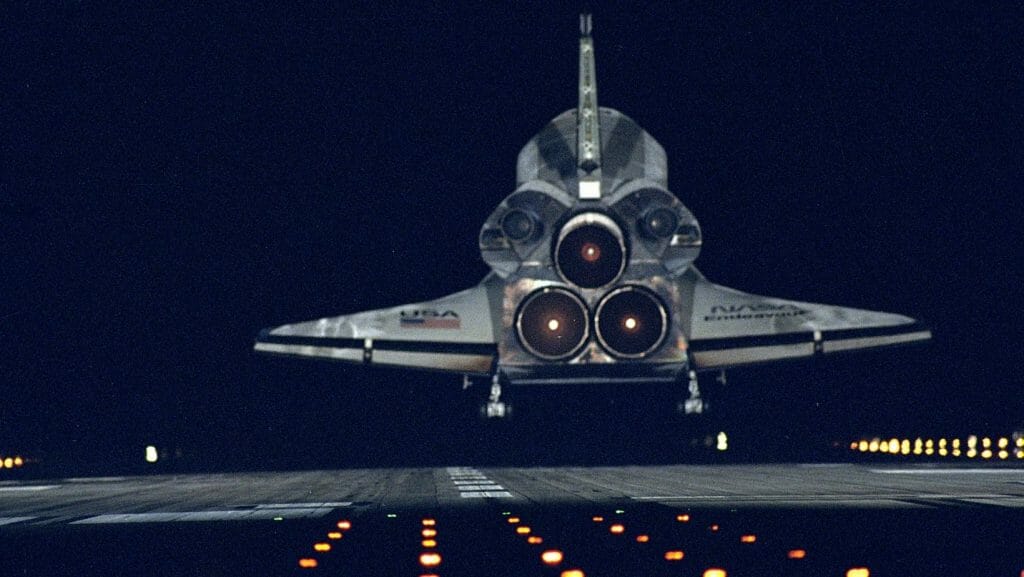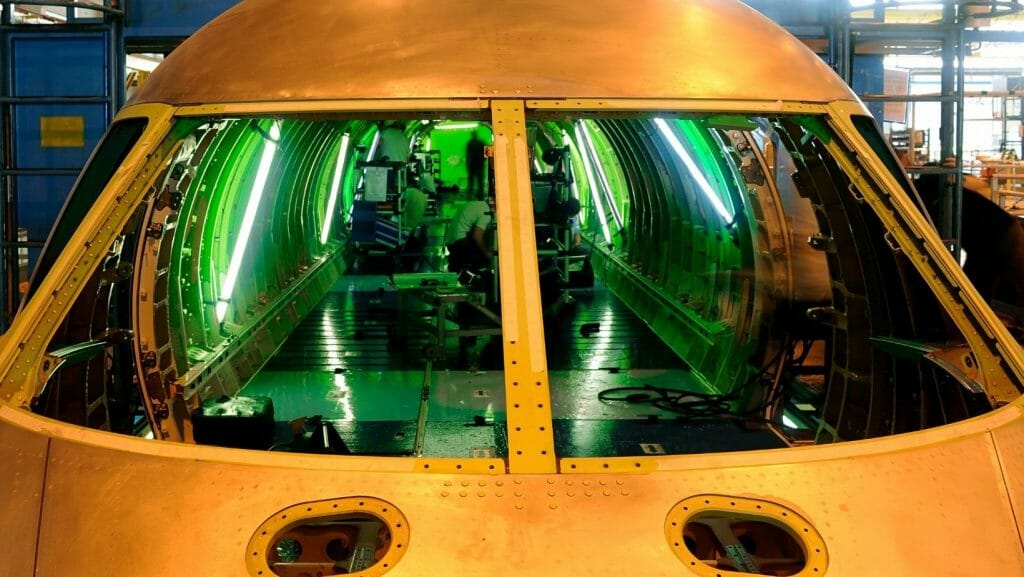The aerospace industry produces a vast majority of the world’s commercial aviation fleet, and as the demands on the industry increase so does the industry’s need for technological solutions.
As the industry continues to push forward with new aircraft and propulsion systems, it is important for the aerospace industry to stay on the forefront of cutting edge technology.
LED lighting is a great example of this. LED lighting has been used in the aerospace industry for nearly a decade, but it is only recently that it has been utilized to its full potential, and the benefits that LED technology can bring to not only the aerospace industry, but commercial aviation in general, are numerous. LED lighting has become a popular choice for the aerospace industry, with many designs now incorporating LED technology due to its high efficiency, low power consumption, and long-lasting durability. With LED technology in the aerospace industry, you can expect better safety, increased efficiency, and a cleaner, more energy-efficient environment.
In the last decade, lighting practices within the aerospace industry have changed dramatically. Prior to the change, most lighting within buildings and facilities was characterized by harsh, yellowish, fixed Phillips-head (HPS) lights; these lights emit a lot of heat and generate a lot of light, but usually fail to provide a uniform illumination. Today, lighting installations within the aerospace industry are evolving rapidly as LED technology makes its way into the industry. LED lamps are widely used in commercial and residential applications. Companies benefit from enormous advantages in terms of safety and efficiency in the workplace, in the warehouse, the production facility and in parking lots.

LEDs have changed the industry in many ways. There are many reasons why the aerospace industry is switching from traditional lighting to LED lighting. The following sections describe the benefits of using LED lighting for the aerospace industry:
Energy efficiency
The aerospace industry incurs enormous costs, and a reduction in these costs would be highly desirable. Several companies offer energy-efficient LED lighting solutions. One such company is Phoenix Lighting, a leading brand that provides specialized lighting solutions for commercial facilities such as airports. Product examples include energy-saving LEDs, multi-functional luminaires, luminaires for hazardous areas and LED luminaires for large areas. Lighting accounts for a significant proportion of the energy bill. The implementation of energy-efficient lighting solutions therefore helps to reduce costs. LEDs consume less energy than conventional incandescent bulbs and have no delay in switching on like fluorescent tubes. The aerospace industry can benefit from energy efficiency and cost savings by switching to LED lighting.
Safe lighting solution
Studies show that fluorescent tubes contain mercury, which is harmful to health with prolonged exposure. Mercury can cause neurological disorders. LED lighting is safe for humans and the environment because it does not contain mercury or carbon dioxide. LED lamps also have a unique optic that eliminates glare. This makes it safe for the eyes.
Sustainability
The airline can increase its revenue by reducing its costs. LED lighting is an effective option as it is more expensive but has a long life. Unlike traditional lighting fixtures that are susceptible to damage, LED lamps have a unique structure that makes them suitable for space applications. The LED bulb does not break easily, making it a good option for busy commercial spaces. LED lamps have a long life, up to 10,000 hours, and can operate in a variety of environments. They have a lifespan of up to 11 years if fired continuously. They are a cost-effective alternative to conventional lighting systems such as HID and fluorescent lamps. The only cost to the airline is the purchase cost, after which it gets lower bills for years. This is why LED lights are popular in air traffic control, without the need for constant monitoring. The LED is designed to ensure that the drivers always work properly. This is a great advantage, and even with frequent switching on and off, the lamp remains in excellent condition.
SoilContents
LED lamps are virtually maintenance free. The luminaires do not need to be maintained or replaced because they are equipped with electronic drivers that can withstand all environmental conditions. Unlike HID or fluorescent lamps, which have magnetic ballasts that must be constantly replaced. LED lights can work in any environment, whether it is cold or in high temperatures.
Low heat
Safety is an important requirement in the aerospace industry, especially when it comes to lighting. LED lamps produce less heat, unlike traditional fluorescent lamps which overheat. LEDs have a low voltage level, which reduces the risk of fire. In addition, overheating can damage pipe outlets and fittings, leading to higher costs.
Aesthetically pleasing
LED lights are available in different designs to suit the environment. They are aesthetically pleasing, especially when used in airports.
Universal
LED lights are versatile and can be installed anywhere in the airport. Both indoor and outdoor aerospace industries can benefit significantly from the installation of these devices.
Easy to control
The LEDs are easy to operate and have various functions, such as presence detectors, dimming function and daylight functions. The user can adjust the brightness according to the time of day. For example, during the day, the brightness is automatically adjusted as needed. The LEDs are also equipped with an aiming system to direct the light in a certain direction. Finally, unlike fluorescent tubes, which emit their light at a 360-degree angle, fluorescent tubes can also emit more light at a 180-degree angle. LED lighting offers significant advantages in commercial applications. They can be used in the aerospace industry for indoor and outdoor lighting. These luminaires are a cost-effective solution thanks to their low energy consumption.
Interesting articles on this topic: What does it take to get into the aerospace industry?LED lighting is rapidly becoming a major player in the aerospace industry. The efficiency and longevity of LEDs are unmatched by other types of lighting, and for their cost, can also be an excellent value when compared to other alternative lighting strategies.. Read more about environmental impact of incandescent light bulbs and let us know what you think.

Frequently Asked Questions
What are the benefits of LED lights?
We live in an age where LEDs are the newest technology to hit the consumer market. As a result, many people are starting to worry that LEDs will replace fluorescent bulbs, and we’ll see the end of incandescent lights. However, this is not the case, and LEDs have a lot to offer us in the world of lighting. While the number of available lighting products has surged rapidly in recent years, the only one of the three light types (incandescent, fluorescent, and LED) that has really become popular is the LED replacement of incandescent lamps. This is partly due to the fact that LED light bulbs have become very inexpensive in the last few years, and are also very energy efficient.
How do LED lights benefit the environment?
The best way to learn about LED lighting for any industry is to learn about the rest of the industry. So, let’s take a look at how LED lighting is used in other industries. The aerospace industry has been using LED lighting for over a decade. They’ve been able to reduce their energy usage by 50% with the help of LED lighting, which has helped cut their expenses while they also reduced their carbon footprint by 40% while increasing their power output by 30%. The benefits of LED lights are numerous, but how does this translate to our everyday lives? Here are eight of the most important ones: 1. LED lights are more energy efficient than traditional lighting. 2. LEDs are a more environmentally friendly form of lighting. 3. LEDs last much longer than traditional lighting. 4. LEDs are highly resistant to heat damage. 5. LEDs are more durable and resistant to damage than traditional lighting. 6. LEDs have a longer life span than traditional lighting. 7. LEDs emit light in the infrared spectrum, which is invisible to the naked eye. 8. LEDs can be used in any color spectrum, without changing the color temperature.
What is special about LED lights?
LED lighting is getting more popular in industrial applications, and there are several reasons why this should be so. For starters, LED lighting is very energy efficient. LED lights typically use much less energy than their incandescent counterparts, and since they are designed to last much longer, LED lights can reduce your energy consumption. LED lights also last much longer than incandescent lights, so you can enjoy the benefits of LED lighting for longer. (In fact, many LED lights last up to 50,000 hours.) What is LED lighting good for? Most people think the answer is nothing. But LED lights have many benefits for Aerospace companies, such as:


